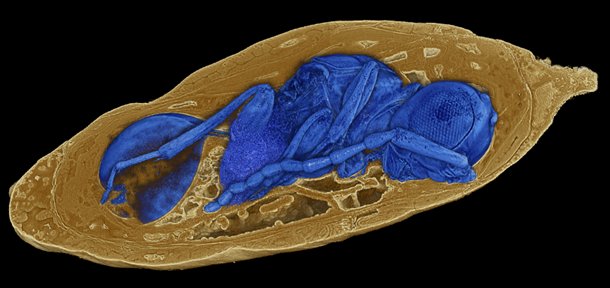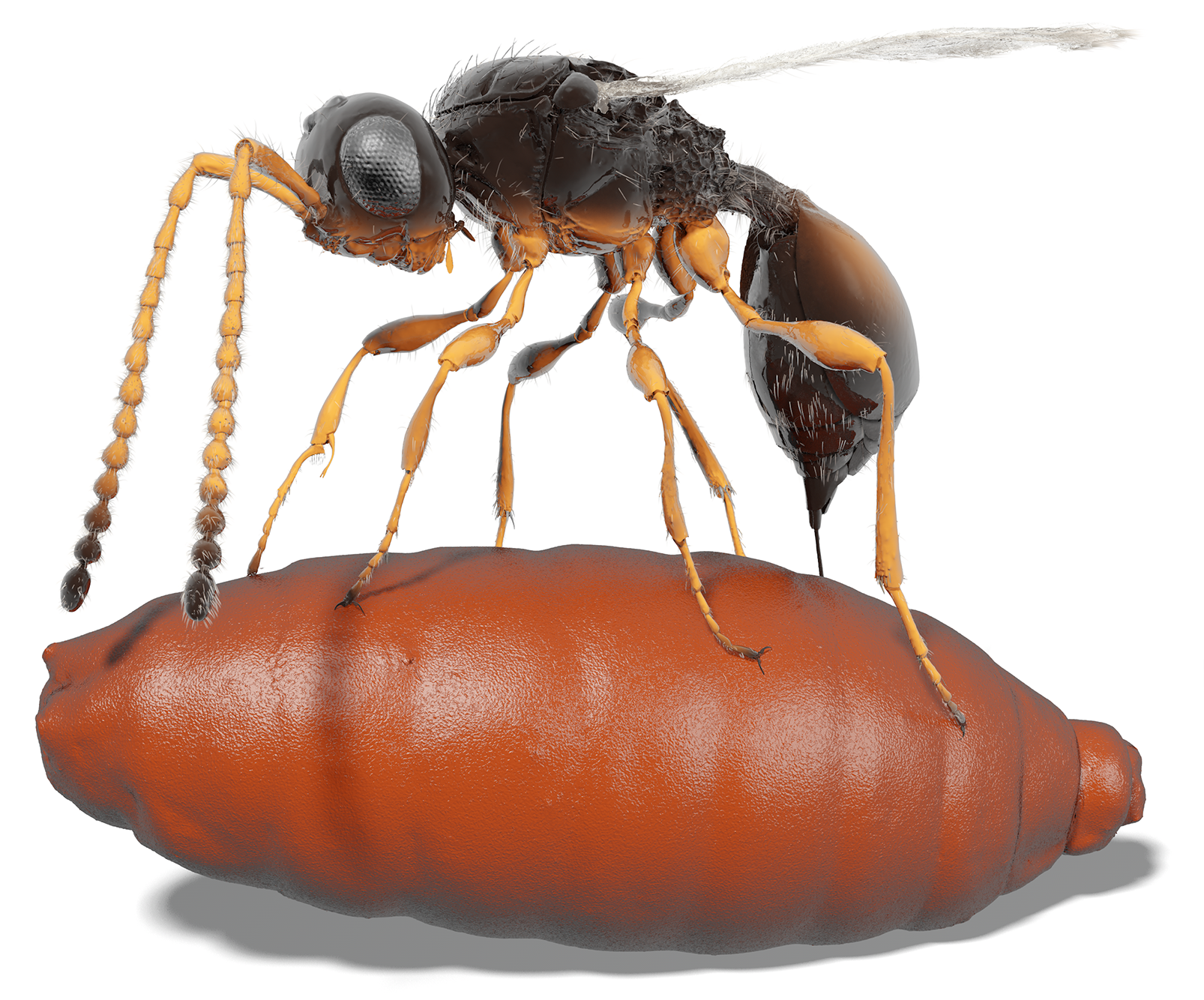X-ray imaging reveals parasitic wasps in fossil fly pupae
About 50 percent of all animal species are considered parasites. The linkage of species diversity to a parasitic lifestyle is especially evident in the insect order Hymenoptera, which contains bees, wasps and ants. However, fossil evidence for host-parasitoid interactions are extremely rare, rendering hypotheses on the evolution of parasitism assumptive.
In an international, interdisciplinary cooperation we have examined 1,510 phosphatized fly pupae from the Paleogene geological time-period (66 – 23 Mya) in France in search for parasitic wasps. The fossils belong to collections in the Natural History Museum of Basel and the Naturhistoriska riksmuseet in Stockholm. In the late 19th century they were collected in phosphorite mines in the region of Quercy, France. In 1944, Swiss entomologist Eduard Handschin had suspected the contours of a parasitic wasp in a thin section of a probably 34 to 40-million-year-old fly pupa, but could not prove it. This was the point of contact for the current project.
Using high-throughput synchrotron X-ray microtomography at the UFO fast imaging station at the KIT synchrotron, we identified 55 parasitation events by four wasp species, providing morphological and ecological data. All species developed as solitary endoparasitoids inside their hosts and exhibit different morphological adaptations for exploiting the same hosts in one habitat. The most frequently observed species of the four was named “Xenomorphia resurrecta”. (The genus “Xenomorphia” is named after the creature from the “Alien” science fiction series, which is known as Xenomorph and also develops endoparasitically. The species’ name “resurrecta” refers to the “digital resurrection” of the species.) The results allowed systematic and ecological placement of four distinct endoparasitoids in the Paleogene and highlight the need to investigate ecological data preserved in such fossil records.
At the UFO station, however, not only fossils are scanned. The setup is equally suited for other projects, in which a large number of pieces have to be imaged. Hence, UFO is of interest to a variety of disciplines, among others to materials science.
A short documentary covering this research was broadcast by 3sat in their science and current affairs programme “nano” (in German) on 28th August 2018. The broadcast can be found here: http://www.3sat.de/mediathek/?mode=play&obj=75415
Reference:
Creative Commons Attribution 4.0 International Public License: https://creativecommons.org/licenses/by/4.0/legalcode


